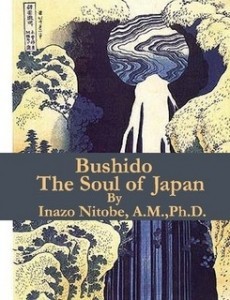
A book of Five Rings. Kendo, the Way of the sword, has always been synonymous with nobility in Japan. Since the founding of the samurai class in the eighth century, the military arts had become the highest form of study, inspired by the teachings of Zen and the feeling of Shinto. Schools of Kendo born in the early Muromachi period – approximately 1390 to 1600 – were continued through the upheavals of the formation of the peaceful Tokugawa Shogunate, and survive to this day. The education of the sons of the Tokugawa Shoguns was by means of schooling in the Chinese classics and fencing exercises. Musashi, pursued the ideal of the warrior searching for enlightenment through the perilous paths of Kendo, this is the book about his art.
Download A book of Five Rings by Miyamoto Musashi as a free pdf ebook here:
 A Book of Five Rings by Musashi Miyamoto
A Book of Five Rings by Musashi Miyamoto
About Kendo or The Way of the Sword a Traditional Japanese Martial Art
Kendo, meaning “the way of the sword,” is a unique martial art that traces its origins to feudal Japan. Evolving from the historical practices of kenjutsu, Kendo embodies the essence of Japanese culture and philosophy while serving as a disciplined path for personal growth and physical training. As an academic exploration of Kendo, this paper delves into the historical background, key principles, training methods, and cultural significance of this traditional Japanese martial art.
Originating during the medieval period of Japan, Kendo has its roots in the samurai’s pursuit of perfecting their sword-fighting skills for both self-defense and battlefield combat. However, as Japan entered an era of peace during the Edo period (1603-1868), the practice of Kendo shifted its focus from warfare to the development of one’s character and moral values. It transformed into a spiritual discipline that emphasized self-discipline, respect, and the cultivation of a strong mind and body.
Rigorous training sessions
At its core, Kendo is characterized by the use of a bamboo sword called a shinai and protective armor known as bogu. The practitioner, known as a kendoka, engages in rigorous training sessions and competitions, referred to as keiko and shiai, respectively. Through these training methods, kendoka strive to refine their technique, enhance their concentration, and develop a sense of mental fortitude and resilience.
Central to Kendo are the fundamental principles known as the “Five Principles of Kendo” or “Nihon Kendo Kata.” These principles encompass the essence of Kendo and serve as a moral compass for practitioners. They include “Rei” (respect), emphasizing courtesy and proper etiquette; “Makoto” (integrity), promoting honesty and sincerity; “Chikara no Kyojaku” (determination), encouraging commitment and perseverance; “Fudoshin” (immovable mind), fostering a calm and composed mental state; and “Kokoro no Sente” (readiness of the heart), emphasizing quick and decisive action.
Kendo as transmission of historical knowledge
Beyond the physical and philosophical aspects, Kendo holds significant cultural value within Japanese society. It symbolizes the preservation of tradition, the transmission of historical knowledge, and the continued pursuit of excellence. Kendo is practiced in various settings, from local dojo (training halls) to international tournaments, showcasing its global reach and its ability to foster international connections and understanding.
Through this academic exploration, we aim to delve into the multifaceted nature of Kendo as a traditional Japanese martial art. By examining its historical evolution, core principles, training methodologies, and cultural significance, we hope to deepen our understanding of Kendo as a discipline that transcends physical combat, serving as a means for personal growth, character development, and the preservation of a rich cultural heritage.


